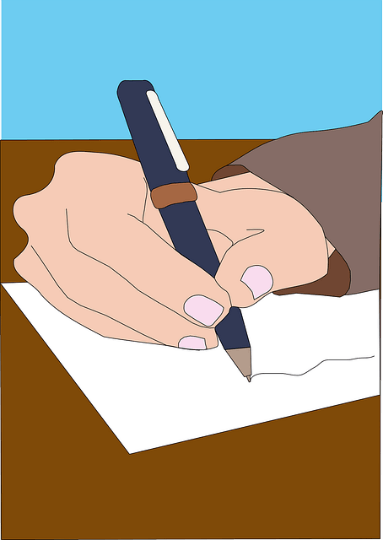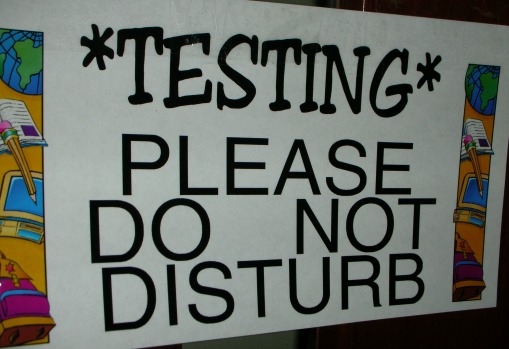|
|
Signs Of Dysgraphia And
The Helps You Can Use
Signs of dysgraphia are something which can prevent you from doing important things in life.
"To write" is something that you do in many aspects of your life like making documents, correspondence letters or answering written questions and forms. Basically, your writing skills are a common ability that is being used in every situation.
However, you or other people that you know may be experiencing dysgraphia symptoms which make you hard to perform and conduct the important tasks of writing and making illustrations when needed.
It can be such a hassle when you’re experiencing this and you need to understand early on the signs of dysgraphia before it makes you lose many opportunities and waste significant amounts of your time.
The Signs of Dysgraphia to Observe
First of all, you should understand that dysgraphia symptoms are usually misunderstood that a person is simply just being lazy, negligent and not motivated to do things.
The following are dysgraphia symptoms which can be seen in a person at different stages of their life:
- Poor handwriting movements
- Too much erasures with paper work
- Having inconsistencies with forms and sizes of letters, some letters may be seen as unfinished
- Not efficient with copying and lacks proper speed
- Needs more focus with a vision to normally write letters
Dysgraphia is one of the learning disabilities that are related to Dyslexia. It may also be confused with ADHD which are altogether different.
More signs of dysgraphia you can find out:
- There is cramping of fingers during writing even small phrases
- You may see an odd form of wrist, arm and body even paper positioning when writing things like significant arm bending which is not common
- Can take a hard time with translation of ideas into written form and there’s the tendency to use the wrong words when doing it
- Having troubles with lines and margins and may lack proper format and organization of paragraphs
- Lacks attention to detail when writing and making drawings
It is also a tendency of people who have signs of dysgraphia to have poor drawing skills like when making diagrams and illustrations.
Another learning disorder which is related to Dysgraphia symptoms is Dyscalculia which is about the difficulties in dealing with math concepts and principles.
Further Dysgraphia symptoms you may observe:
- There may be handwriting abilities which interfere with correct spelling and written composition
- Showing too much dependence on verbal cues
- Difficulties with learning correct grammar
- Big inconsistencies between written ideas and that of things that are described through speech or verbal
- Constant pronouncing of words aloud during writing
If you or anyone is experiencing signs of dyscalculia, there may be the experience of getting tired quickly when writing. Worse than this is that you may feel pain when writing or doing paperwork.
While dyscalculia is a math disability dysgraphia is also called "transcription disability." The dysgraphia learning disability may cause you or any person like students, emotional trauma and troubles because no one can read their writing or it makes hard for anyone to do so.
People with dysgraphia symptoms are always well aware that they’re not normal and not performing at the same pace and level as other people of their same age like their peers and friends. Dysgraphia treatments are needed early on when the deficiency is detected and diagnosed.
Dysgraphia Treatments that Will Work
Here are several treatments for the signs of dysgraphia which can help you or anyone cope up from the weakness:
1. Use study skills strategies like auditory learning styles – It can be an alternative to written expression. This technique uses the power of sounds and its properties in order to learn and help retain information. Developing listening skills can also be helpful.
2. Educational therapy can be used – as a dysgraphia treatment it uses different methodologies and teaching materials to help any student become more successful.
3. Computers and digital devices such as smart phones can support – this makes it easier to write letters, form phrases and sentences more clearly.
Some computer text editors like Microsoft Word have "spelling checkers" which can help avoid wrong spellings. There is also computer software that provides instructions through voice and actual demonstrations.
There are lots of these references over the internet. These are good strategies that can be used against the signs of dysgraphia.
More Dysgraphia Treatments:
4. Kinesthetic learning techniques can be practiced – this is for early training using physical memory by over-learning how to write letters through many repetitions.
As part of dygraphia strategies the training includes having eyes closed while writing letters to overcome too much dependence with sight. "Cursive writing" is also encouraged which helps lessen spacing problems.
5. Another of the alternative study skills strategies is visual learning styles which can be applied by the teacher – this uses diagrams and illustrations to describe and relay information to the student. It also makes an effective learning technique for someone with dysgraphia symptoms.
6. Using more effective tools for writing and composing – the signs of dysgraphia can be managed easier by using more compatible paper like those with outlines and sensory guides for writing. A better pen or pencil which gives a more comfortable grip and writing performance should be used.
7. Give more time to the learning of a person with dysgraphia symptoms. Patience, consideration and moral support are some of the most important things that can be provided.
These are useful dysgraphia strategies you can apply and practice and it would be more effective when family members are around to support.
When Not Taken Seriously
When signs of dysgraphia were not given early attention it may "damage" self-esteem greatly and prevent you or anyone from fulfilling a lot of things in life. There can be less productivity along having anxiety symptoms because of the effects of not being able to do desired things.
Depression warning signs may appear when the troubles and hassles of dysgraphia symptoms experienced becomes worse. This is understandable because people who have dysgraphia symptoms would try to give much more effort, so they can achieve what their peers and friends can do.
Everyone wants to be accepted that’s why being "normal" is easier. It would surely be quite frustrating when you see that your efforts and hard work is not producing much result or paying off as you expect it to be.
Dysgraphia is a long time challenge for anyone experiencing it, but it may change through time. It can determine the course of life and plans of any person having it. So anyone who has the disorder must not be ashamed to tell their parents, guardian and teachers about their learning disability so they can help and understand.
This is because hiding the learning disability will only result to delayed dysgraphia treatments and solutions which can make a big change in the progress of living a better life.
The signs of dysgraphia can be overcome through extra and continuous practice learning the skills which are required to be a good writer. Some people who have dysgraphia symptoms excel with other things like those who have dyscalculia symptoms.
Even there’s the presence of weakness in their ability to write, they may be very good when it comes to verbal fluency and intellectual knowledge. It means they may be gifted on other things.
The signs of dysgraphia can be difficult for you or anyone experiencing it, but you should know that there are many alternative ways to make learning easier. Proper adaptation to the learning disability is important as well as using special techniques to cope with dysgraphia symptoms.
Go from Signs of Dysgraphia to Effective Time Management Strategies













